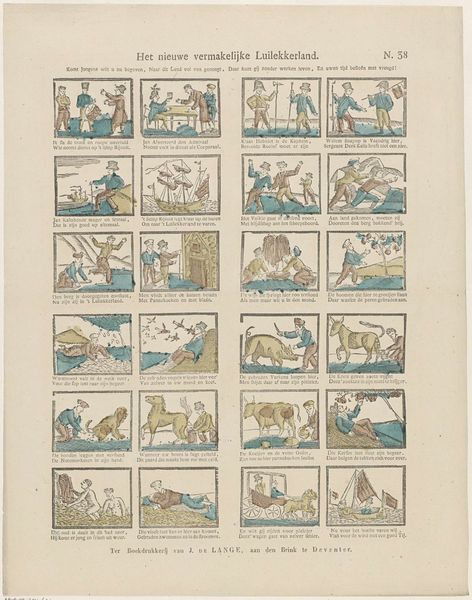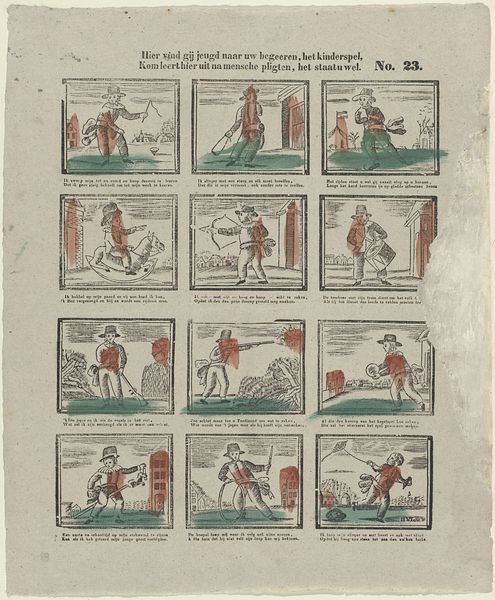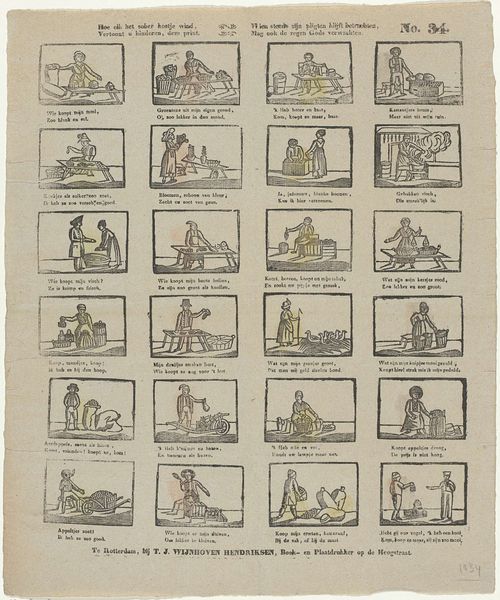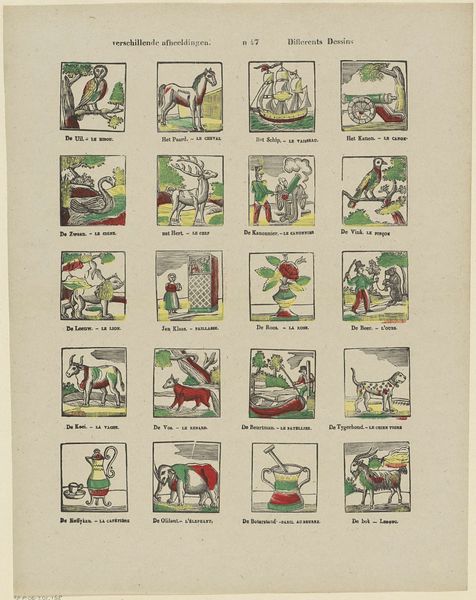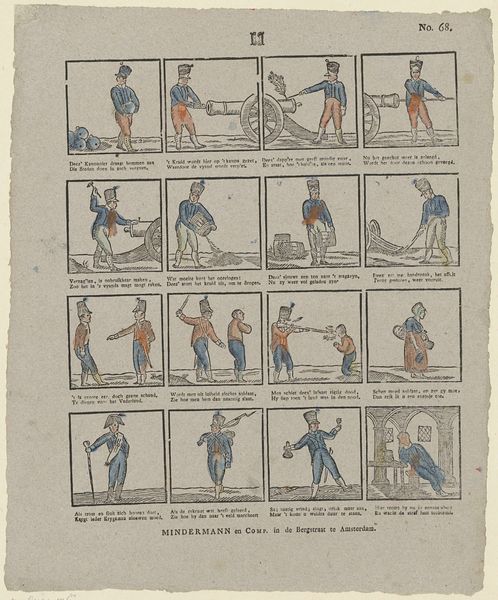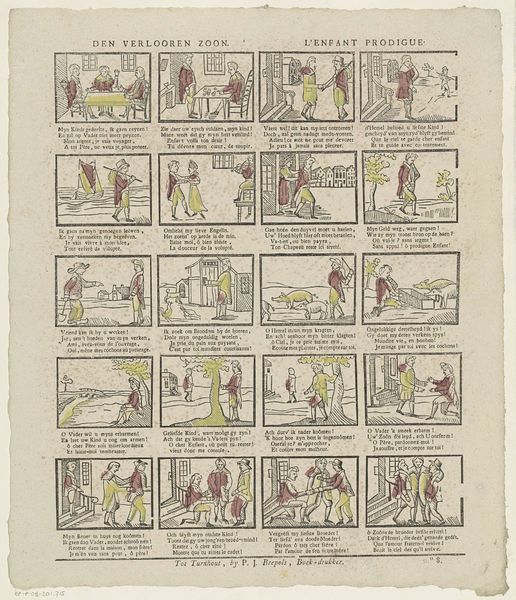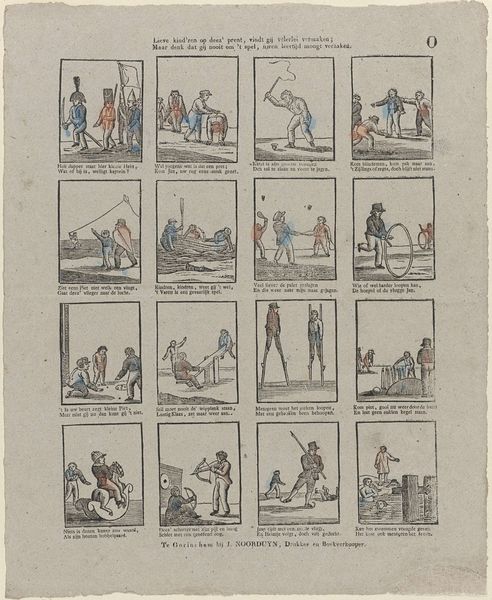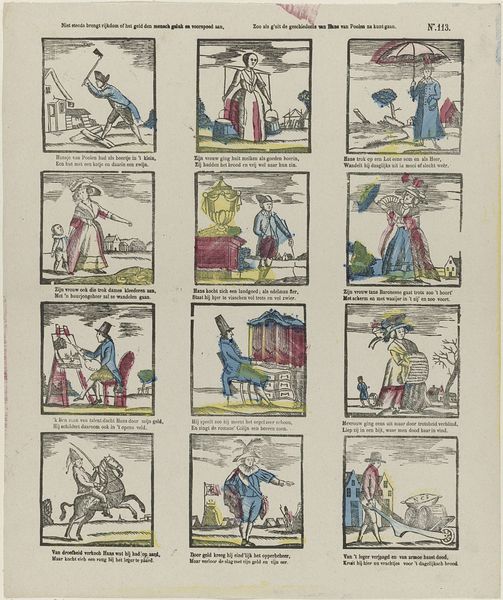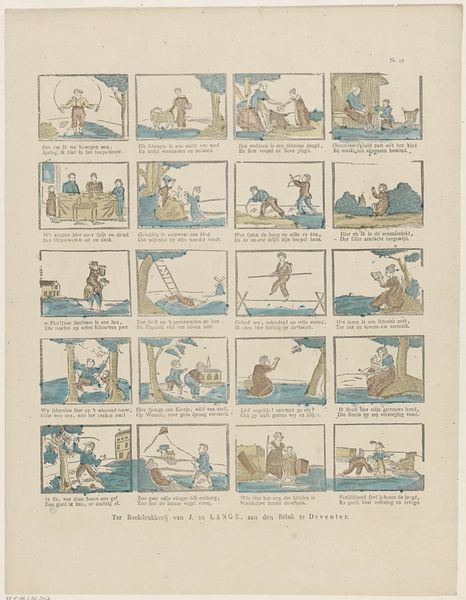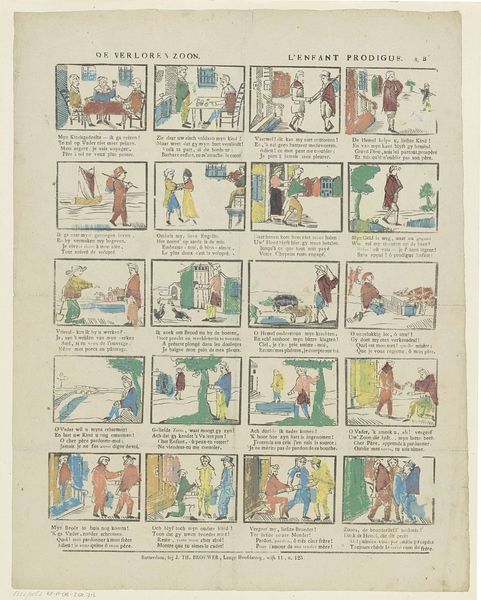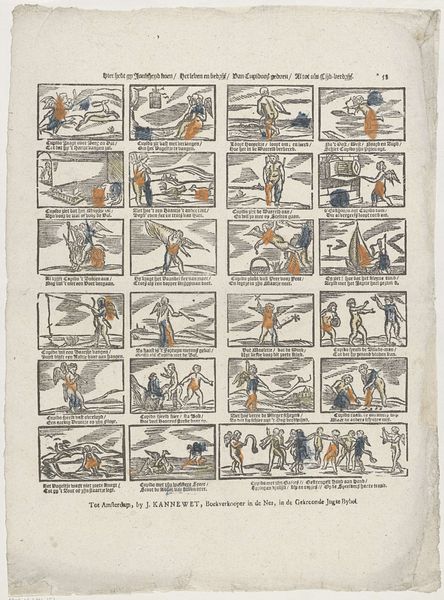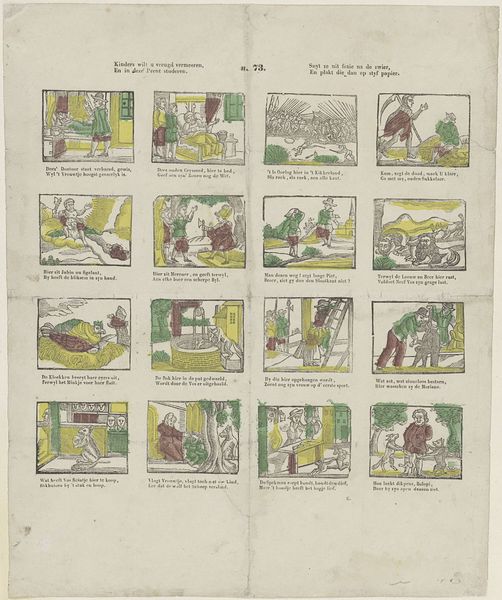
Hoe kinderen hun tijd verdrijven, / Kan deze prent u klaar beschrijven; / Maar wat van kinders wordt begeerd, / Dat wordt u in de school geleerd 1832 - 1850
0:00
0:00
print, engraving
#
comic strip sketch
#
aged paper
#
16_19th-century
#
quirky sketch
#
narrative-art
# print
#
sketch book
#
personal sketchbook
#
sketchwork
#
ink drawing experimentation
#
folk-art
#
comic
#
sketchbook drawing
#
genre-painting
#
storyboard and sketchbook work
#
sketchbook art
#
engraving
Dimensions: height 418 mm, width 334 mm
Copyright: Rijks Museum: Open Domain
Curator: This delightful print is titled "Hoe kinderen hun tijd verdrijven, / Kan deze prent u klaar beschrijven; / Maar wat van kinders wordt begeerd, / Dat wordt u in de school geleerd," which translates to "How Children Spend Their Time, / This print clearly describes you; / But what is desired of children, / That is learned in school." It's by Theodorus Johannes Wijnhoven-Hendriksen, dating from around 1832 to 1850. The medium is engraving. Editor: It has such a whimsical feel. Almost like a very early form of comic strip. The simple color palette and somewhat crude drawing style contribute to this charming, nostalgic atmosphere. Curator: Absolutely. Wijnhoven-Hendriksen created this work within a very specific societal structure, one where the roles of children were explicitly defined and debated. Look at the imagery: a boy with a hoop, another tormenting a bird, all contrasted by the promise of education in the adjacent verse. There is tension there. Editor: It’s fascinating to consider each small scene as a symbolic snapshot of childhood during that time. The hoop represents endless play, freedom. The bird could symbolize both the fleeting nature of childhood and also the cruel streak sometimes found in the young. There is a world view revealed here. Curator: Precisely. What’s missing, of course, is the child’s perspective. Adults decide what is seen and recorded. One must contextualize what we see to know the larger, and likely unheard, counter-narrative. We have to ask ourselves, who gets to define childhood, then and now? And how does this impact their futures? Editor: Indeed. Looking closely, some symbols recur. Notice the hats—nearly everyone wears one. Or the animals—are they simply pets, or reflections of domestic life, symbols of humanity's relationship with nature? These reoccurring elements reinforce a shared understanding of society. Even simple things like the design of the ladders has meaning when repeated. Curator: Those visual echoes, intended or not, amplify the social and political messaging—and it shows that so much of history is bound to those unseen voices that had lived this past reality we try to unpack today. Editor: A poignant reminder that images hold stories, secrets, and symbols of eras gone by. It is beautiful how simple shapes become layered expressions that speak to the collective conscience of an age. Curator: Yes, by recognizing this piece as part of a continuum of social ideologies, the work evolves past a mere scene into a critical and valid inquiry of that moment in our shared human story.
Comments
No comments
Be the first to comment and join the conversation on the ultimate creative platform.
